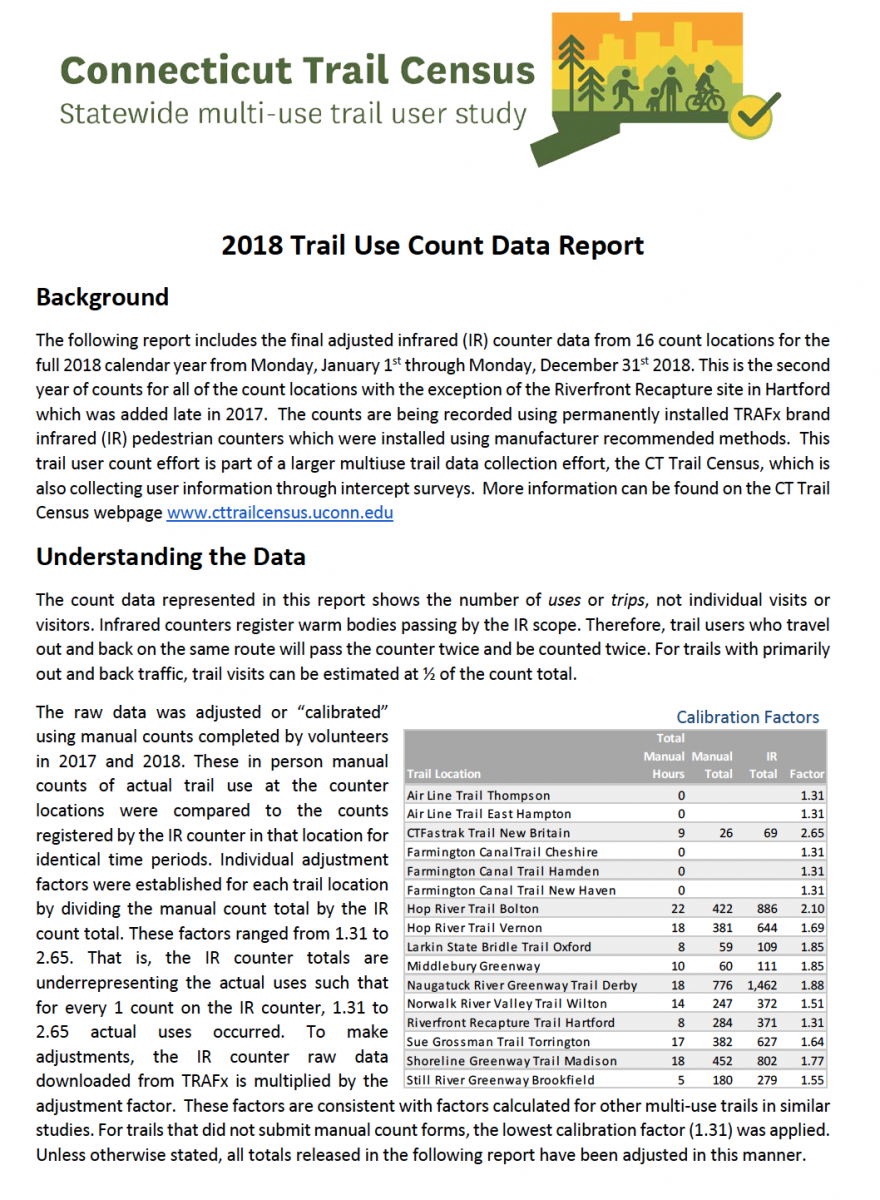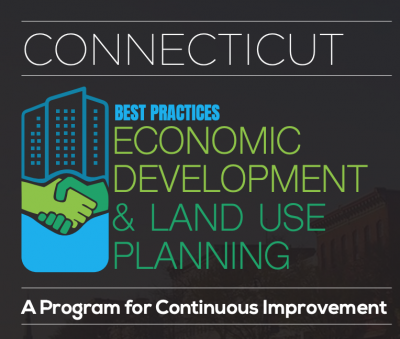Please help to spread the word about these two exciting paid student internships available for this summer! Compensation is $16/hour, 15 hours per week for 10 weeks ~ $2,400 (potential for additional hours) Students will have an opportunity to work closely with community & economic development professionals from across the state, contribute to applied programming, and gain employment experience. Students in geography, sociology, public policy, urban and regional studies, landscape architecture, natural resources, economics, communications, are encouraged but all applicants will be considered. Strong communication skills and a desire to engage in meaningful community based work are required! More details below.
- Community & Economic Development – Best Practices in Land Use & Economic Development Program Internship – CEDAS – Open to Undergraduates and Graduate students. Apply here or send your cover letter, resume & transcript to laura.brown@uconn.edu
- Connecticut Trail Census Summer Internship – Open to UConn students only – Apply here – Contact laura.brown@uconn.edu
******
Community & Economic Development – Best Practices in Land Use & Economic Development Program Internship- CEDAS
Supervisor contact: Laura Brown, Community & Economic Development Educator – New Haven County Extension Center, Contact- Laura Brown: 305 Skiff St, North Haven, CT 06473 Direct: 203- 407-3157 laura.brown@uconn.edu
Office location: Remote. Weekly online meetings (computer required) will be required and some travel around the state may be required to fully participate in the program. Interns will have the opportunity to be present in an office in North Haven as needed.
Background:
Extension programs in Community & Economic Development work in partnership with communities to engage, educate and build capacity of community residents, leaders and decision makers. This work helps residents, community leaders, and decision makers understand decision-making processes, respond to local needs and opportunities, and make informed decisions based on research. https://communities.extension.uconn.edu/ This internship will focus on the Best Practices in Land Use and Economic Development program https://www.cedas.org/Resources/CT-Best-Practices-In-Land-Use-and-Economic-Development/, a community accreditation program for municipalities in Connecticut intended to drive communities to pursue excellence in land use and economic development practices and recognize communities that have established best practices. In October 2019, twenty four municipalities were certified through this program. The program is offered as a partnership between UConn Extension, the Connecticut Economic Development Association and the Connecticut Chapter of the American Planning Association.
Tasks/Responsibilities:
This internship will focus on development of educational materials related to the Best Practices in Land Use and Economic Development program in collaboration with the Connecticut Economic Development Association programs committee including but not limited to: development of case studies for inclusion in the Best Practices library, public communications, about the program and assistance with administration of the program application process. The intern will work closely with the Community & Economic Development Educator to refine a work-plan based on her/his skills and interests.
Date ranges and work times: Weekly online meetings (computer required) will be required and some travel around the state may be required to fully participate in the program. Interns will have the opportunity to be present in an office in New Haven as needed as well as various program meetings and meetings of the Connecticut Economic Development Association Board in Rocky Hill but the majority of the work hours will be self managed.
Learning objectives: Interns will:
- Gain/ broaden their understanding of community & economic development program implementation and related career opportunities
- Understand key concepts in municipal economic development practice
- Enhance their skills in educational communications (writing and verbal presentation skills) for a public audience
Mentorship commitment:
Laura Brown will work closely with the intern to discover key learning objectives and interests within the scope of Community & Economic Development programs. Brown will meet with the intern on a weekly basis by WebEx or face to face at a mutually agreeable time to check in on the work plan. The intern will benefit from additional participation in program related trainings, meetings and activities around the state proving. The intern will have the opportunity to meet and gain connections and career contacts with program partner organizations such as the Connecticut Economic Development Association, the Connecticut Economic Resource Center, and job shadowing with community & economic development partners. We will also support the student in identifying additional related learning and career opportunities following the internship experience.
Compensation: $16/hour, 15 hours per week for 10 weeks ~ $2,400 with additional hours possible.
******
Connecticut Trail Census Summer Internship
Supervisor contacts: Laura Brown, Community & Economic Development Educator – New Haven County Extension Center, & Charles Tracy, Connecticut Trail Census Coordinator, Middlesex County Extension Center Contact- Laura Brown: 305 Skiff St, North Haven, CT 06473 Direct: 203- 407-3157 laura.brown@uconn.edu
Office location: Remote. Weekly online meetings (computer required) will be required and some travel around the state may be required to fully participate in the program. Interns will have the opportunity to be present in an office in New Haven or Haddam as needed but the majority of the work hours will be self managed.
Background:
The Connecticut Trail Census www.cttrailcensus.uconn.edu is a statewide volunteer data collection program intended to inform a better understanding of multi-use trail use in the state of Connecticut and to make this important information available to trail user groups, administrators, government agencies, and the general public. The goals of the project are to understand when, who, how, and why people make use of Connecticut’s multi-use trail, educate trail user groups, administrators, state and local government agencies, and the general public about trails and their impacts, obtain multi-year information about trail use, user demographics, economic impacts, and trail amenities for identification of patterns and trends, to promote active citizen participation in monitoring and understanding the value of trails, and to encourage sound trail building and maintenance programs based on data.
Tasks/Responsibilities:
As part of the CT Trail Census project, this internship will involve assisting with all aspects of the Trail Census including input of and basic analysis of survey data, drafting communications, and assisting with educational programs. In particular, the student will be involved with 1) the implementation of a new QR code based survey deployment and short term infrared counts on trails throughout the state, 2) gathering and reviewing trail data in for the new CT Trail Finder website portal, and 3) helping to prepare outreach for a social media campaign on the value of Connecticut’s trails (economic, public health, recreation, tourism, transportation). The student should have the ability to read and summarize literature, excellent communication, writing and organizational skills, and ability to work effectively independently. There will be opportunities for sharing this scholarly work with peers through a peer reviewed journal piece, presentations, conferences and webinars.
Date ranges and work times: Remote. Weekly online meetings (computer required) will be required and some travel around the state may be required to fully participate in the program. Interns will have the opportunity to be present in an office in New Haven or Haddam as needed but the majority of the work hours will be self managed. Dates and work hours will be mutually agreed upon at the start of the internship.
Learning objectives:
- Understand concepts and protocols for measuring, recording and publishing the impacts of state and community outdoor recreation facilities;
- Learn about the multiple values of community and long-distance shared use trails;
- Learn how state agencies partner with local and private conservation organizations to advance and promote outdoor recreation.
- Enhance their skills in educational communications (writing and verbal presentation skills) for a public audience
Mentorship commitment:
In addition to assisting with the required learning documentation and resume review, Charles Tracy and Laura Brown will work closely with the intern to discover key learning objectives and interests within the scope of the Trail Census project. We have found weekly meetings to be very successful ( our leadership team currently meets weekly by WebEx) and we would envision the intern participating in these meetings. We would also encourage the intern to participate in Trail Census trainings, meetings and activities around the state proving them with connections and career contacts in our program partner organizations such as the Department of Energy and Environmental Protection, the Connecticut Forest and Park Association and the National Park Service. We will also support the student in identifying additional related learning and career opportunities following the internship experience.
Compensation: $16/hour, 15 hours per week for 10 weeks ~ $2,400.



 New CEDAS intern to work on Best Practices in Land Use and Economic Development Program
New CEDAS intern to work on Best Practices in Land Use and Economic Development Program